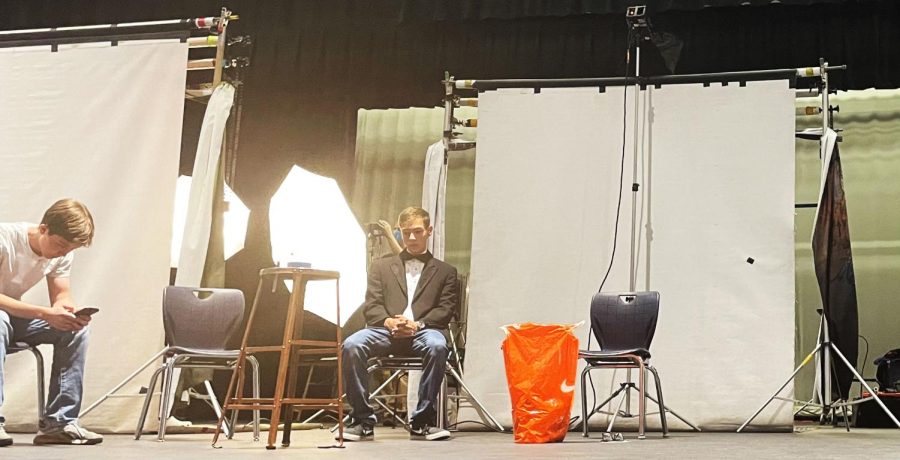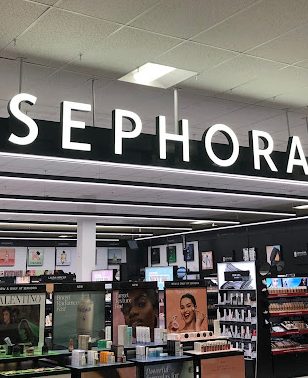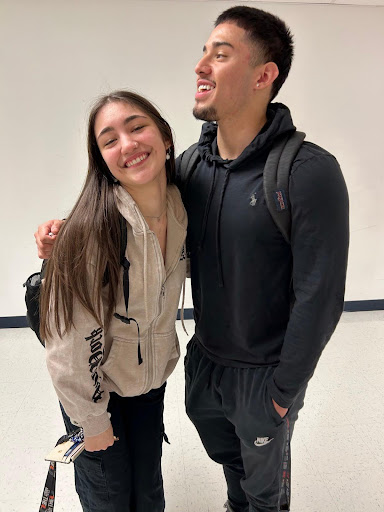Senior pictures separate students
Photo courtesy of Robbie Kugler
Two seniors waiting to take their portraits. With multiple photos taken during every session, and a limited number of available photographers, tuxes, and drapes, senior photos can be an extremely lengthy process.
Senior pictures are being conducted as usual in a rigidly gendered fashion. Given recent policy changes regarding the acceptance of non-binary students in FCPS, different clothing options deserve to be explored.
“[The tuxes and drapes are] more of an east coast thing, interestingly enough,” said Lifetouch photo lead Russell Honsa. “On the west coast, they use more personal clothing, and they use more tuxes and drapes on the east coast. It’s more our type of thing.”
The current standard for senior pictures, the black tux for boys and drapes for girls, has remained unchanged since 1975. Before that point, senior girls were expected to wear dresses and senior boys were expected to wear a suit and tie, with no consistent guidelines regarding their clothing’s cut or color. While there is no county policy on the matter, the nearly 50 year old tuxes and drapes are still used by a large number of local high schools, and the idea of changing it has never once been broached by the administration.
“In a general sense, I have not seen it moved away from,” yearbook adviser Melissa Morgan. “Here at [WS], in recent history, I think [COVID-19] was the only exception, and even with that, there was a little bit of push back. They didn’t want people just taking pictures in hoodies.”
Currently, seniors are afforded both more and less freedom with their yearbook photos than other students. They receive more personalized, scheduled sessions with more photos taken, but are largely restricted to the aforementioned options of a tux or drape. For an extra fee, seniors can take additional photos while wearing street clothes or a graduation cap and gown. While those options are not without merit, they are largely negligible in the context of the yearbook due to the administration’s strict preference for printing the formal pictures.
Granted, when push comes to shove, students can be featured in the yearbook without a tux or drape, as administration values including the entire student body over the objective of strictly formal pictures. Still, for students who may feel constrained by the gendered options, or may just dislike the formal style in general, the current system forces them to either feel uncomfortable when they take their portraits or feel uncomfortable later when they don’t look like everyone else in the yearbook.
“I think there is this kind of unspoken expectation among parents, who are the ones buying the yearbook, that this is what should be in a yearbook,” said Morgan. “Having said that, I don’t see a lot of parents pushing back if we, as a school, decided to transition to formal wear or business-casual wear. If we were to go that direction, there is more room for expression, and I think that’s really cool.”
All transgender students, even those who come out partway through the school year, are allowed to take photos with gender-affirming clothing, and in that regard, the current standard may actually be a boost of confidence for those students. Yet, while gender inclusivity is being logistically expanded across the board by FCPS, senior pictures still stand as a strict, social enforcement of binary gender, which can have negative impacts on non-binary and gender non-conforming students.
Disregarding gender, the fact remains that the majority of our students don’t go to school every day wearing tuxedos and strapless dresses. Some students like to dress up on a frequent basis, and they are allowed to do so. All students are afforded the right to express themselves through their choice of clothing during the school day, and that right is afforded to the freshmen, sophomores, and juniors for their yearbook pictures. Only the seniors are given the supposed privilege of being reduced to a monolith.






